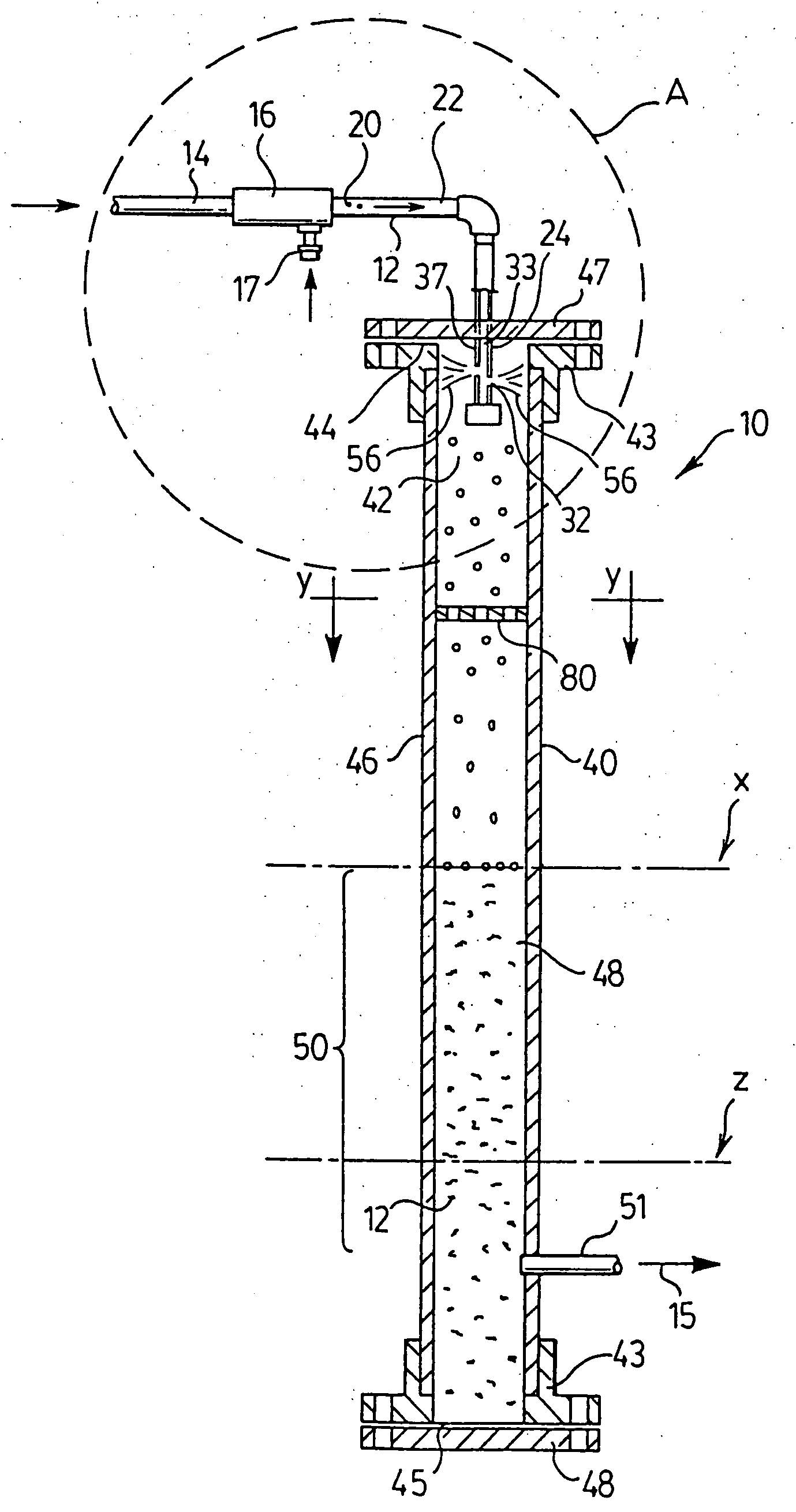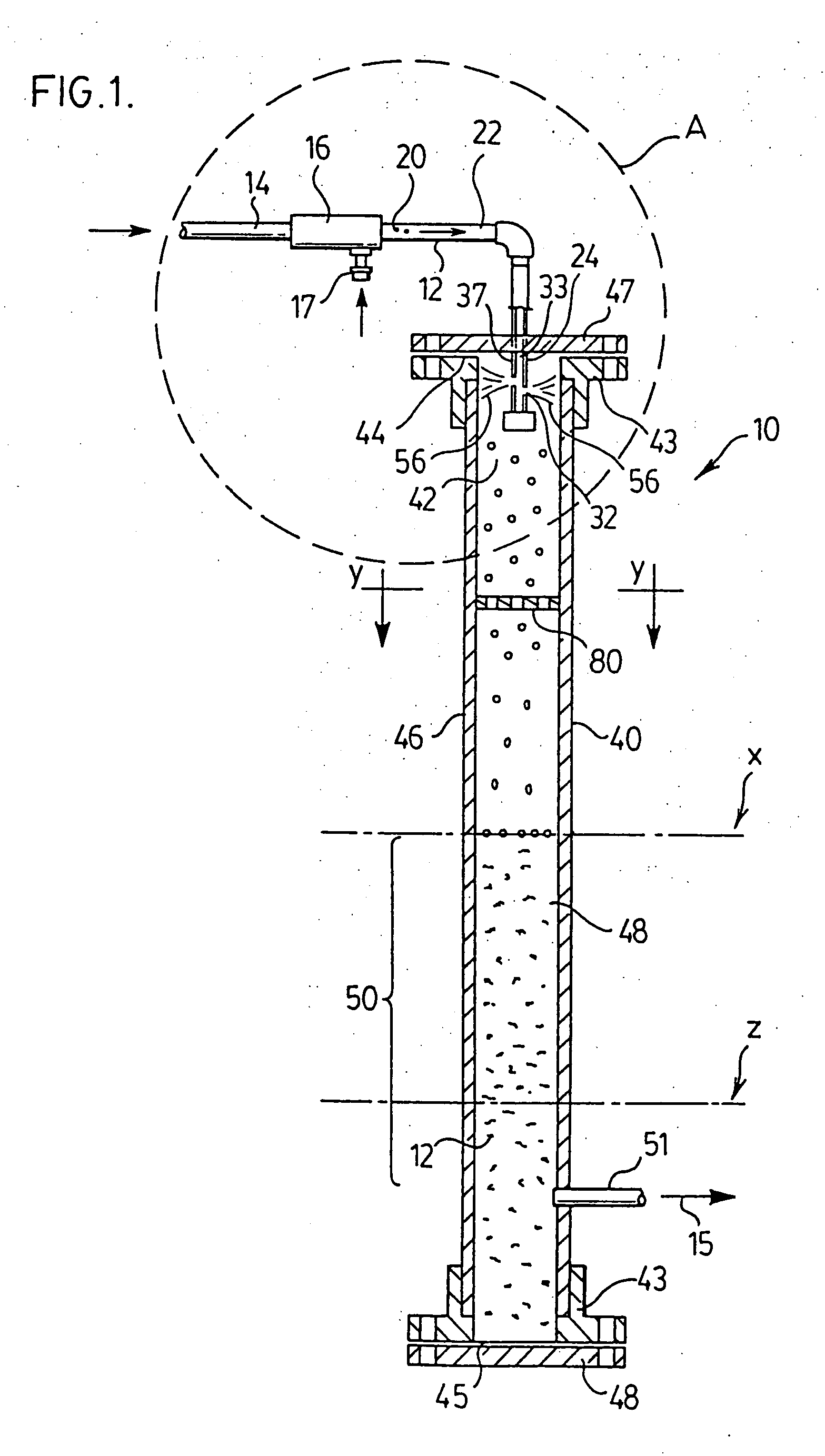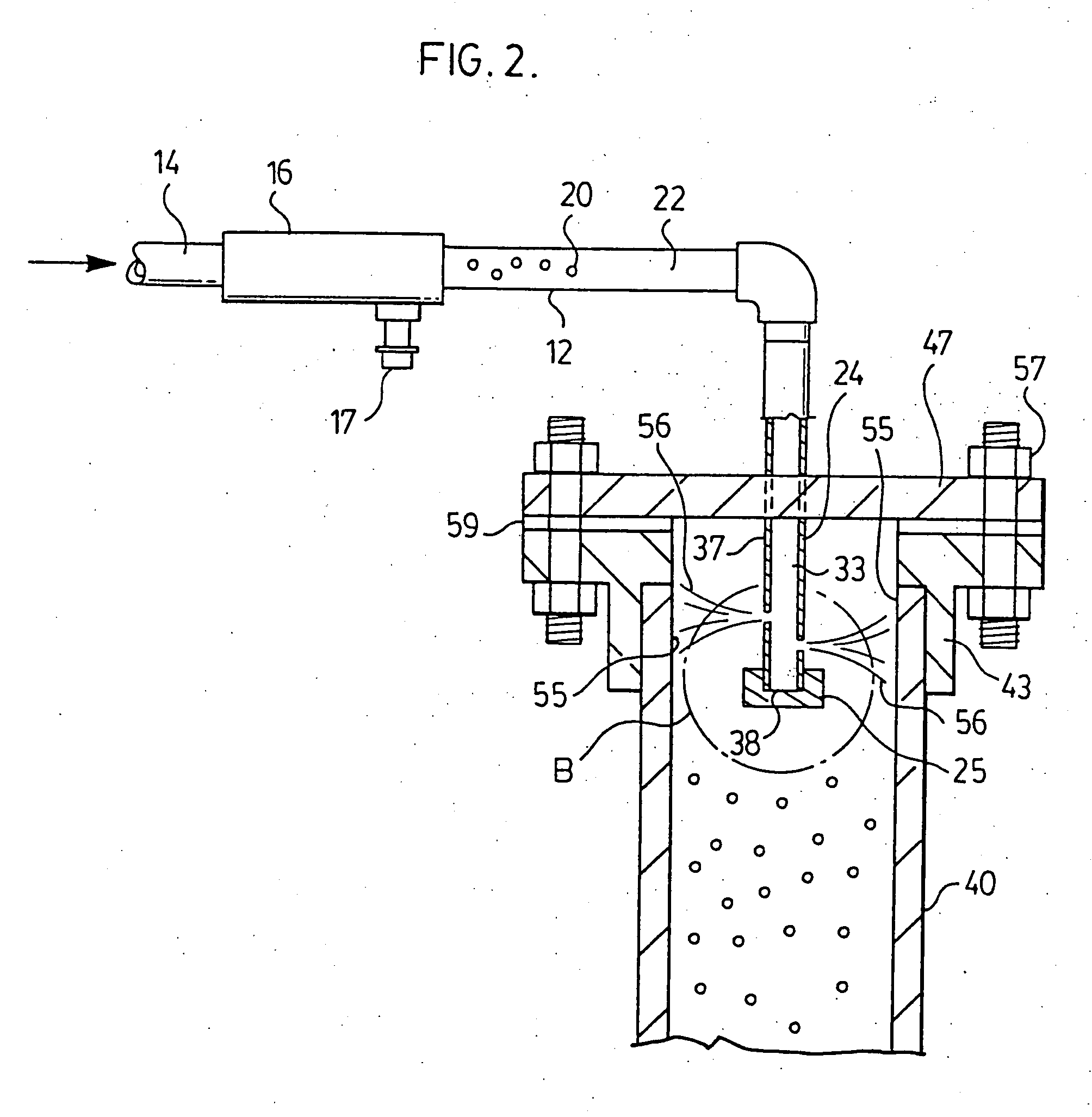Apparatus and method for producing small gas bubbles in liquids
- Summary
- Abstract
- Description
- Claims
- Application Information
AI Technical Summary
Benefits of technology
Problems solved by technology
Method used
Image
Examples
example 1
A series of seventeen various-sized apparatus 10 were constructed in accordance with one of the embodiments of the invention as contemplated herein, namely that embodiment shown in FIG. 1, having a pair of apertures 32 in the form of horizontally-extending rectangular slots 90, as shown in FIG. 5.
Each of the aforesaid seventeen test units comprised a shell (referred to above and below as a vessel 40), having in an upper portion 42 thereof a downwardly extending, substantially vertical cylindrical pipe member 24 of various Di and Do, ranging from nominal pipe nominal diameters of 0.50 inches to 10.0 inches.
Each of pipe members 24 for the various test units had a pair of rectangular opposed slots 90 therein, as shown in FIG. 5. The exit area Ae for the pair of slots was set as the maximum, in accordance with the requirement Ae(max)=Ai×Di / Do. Because the width of each of the slots 90 was the width Di of each pipe member 24 as shown in FIG. 5, the vertical depth (ie “gap”) of each ...
example 2
Purpose
The purpose of this experiment was to confirm various formula for optimum creation of microbubbles using the apparati of the present invention.
This was done by evaluating the effect of aperture size and apertures exit area on the size of the bubbles produced.
Apparatus
Apparatus of the type shown in FIG. 14 was selected, and in particular an apparatus of FIG. 14 having the dimensions for inlet pipe member OD and ID and (upper) impaction pipe length, as well as shell (vessel) height and diameter, as per test unit number 2 in Tables I and II.
FIG. 15 shows associated equipment used with the selected model of apparatus 10 of the present invention in conducting the above tests. A Plexiglas receiving tank 100 was utilized for receiving water having microbubbles entrained therein from apparatus 10 and to permit observation of bubble rise to permit calculation of bubble velocity (used to determine bubble size). A ruler 102 was attached to the outside of the tank to allow form...
PUM
| Property | Measurement | Unit |
|---|---|---|
| Length | aaaaa | aaaaa |
| Pressure | aaaaa | aaaaa |
| Pressure | aaaaa | aaaaa |
Abstract
Description
Claims
Application Information
 Login to View More
Login to View More - R&D
- Intellectual Property
- Life Sciences
- Materials
- Tech Scout
- Unparalleled Data Quality
- Higher Quality Content
- 60% Fewer Hallucinations
Browse by: Latest US Patents, China's latest patents, Technical Efficacy Thesaurus, Application Domain, Technology Topic, Popular Technical Reports.
© 2025 PatSnap. All rights reserved.Legal|Privacy policy|Modern Slavery Act Transparency Statement|Sitemap|About US| Contact US: help@patsnap.com



